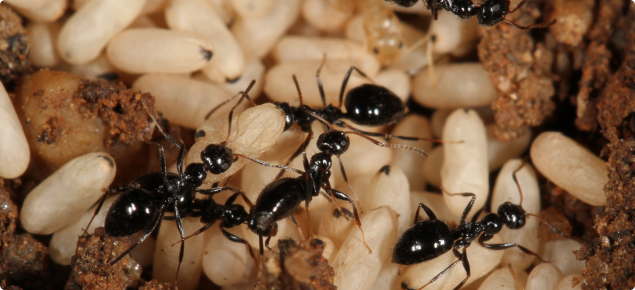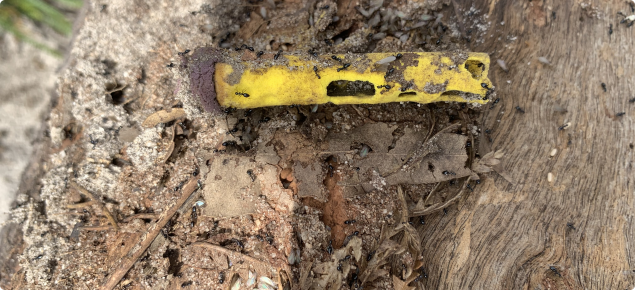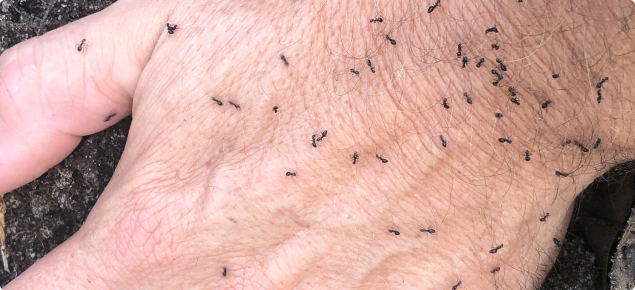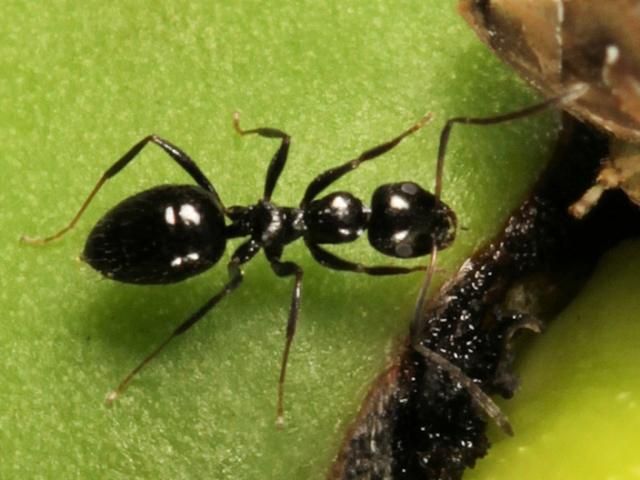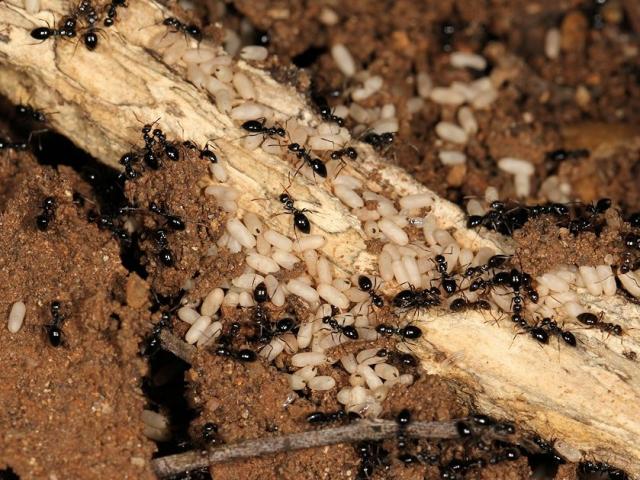Overview
The African black sugar ant (Lepisiota incisa) is one of several invasive introduced ant species in WA that have the ability to form super colonies by establishing interconnected nests with collaborative egg-laying queens. These super colonies can spread for hundreds of square kilometres.
These ants can be aggressive toward other ant species, potentially outcompeting and displacing important native ants.
Description
African black sugar ants are a shiny dark brown ant about 2–3 mm in length. The ants are covered in thick blackish bristles and there is a pronounced spine between the thorax and abdomen (these features are only visible under a hand lens or microscope).
Western Australian detections
African black sugar ants have been found in 11 Western Australian suburbs and towns. They were first discovered in Maddington in 2020, followed by detections in Welshpool, Fremantle, Wattleup, Forrestfield, Hazelmere, Maida Vale, Jandakot, Balcatta, Kenwick and Narrogin.
The African black sugar ant is a pest of national significance and all known infestations are under eradication.
Impact
African black sugar ants are highly likely to be suited to Australian conditions. They have a huge potential to establish in a wide variety of habitats, including precious, undisturbed bush areas. Once established, the aggressive behaviour and ability to produce huge super colonies of the ants may disrupt social, commercial and agricultural activities. The ant has been known to harvest plastic and infest electrical boxes and components, causing damage to infrastructure.
While this ant is a significant threat to our environment, it does not sting people or pets.
How to report
If you suspect you have African black sugar ants at your property you can report via
MyPestGuide Reporter app or online reporting tool mypestguide.agric.wa.gov.au
or
Pest and Disease Information Service (PaDIS)
T: +61 (0)8 9368 3080

